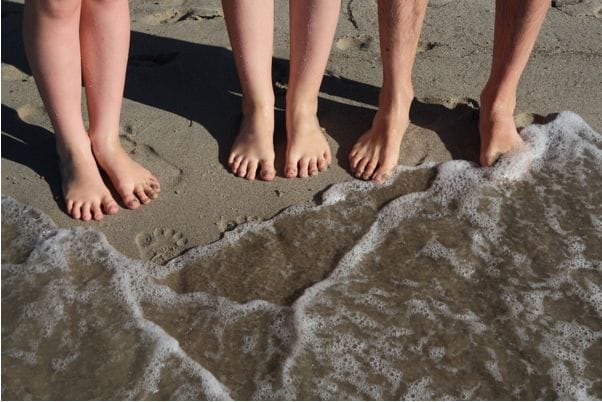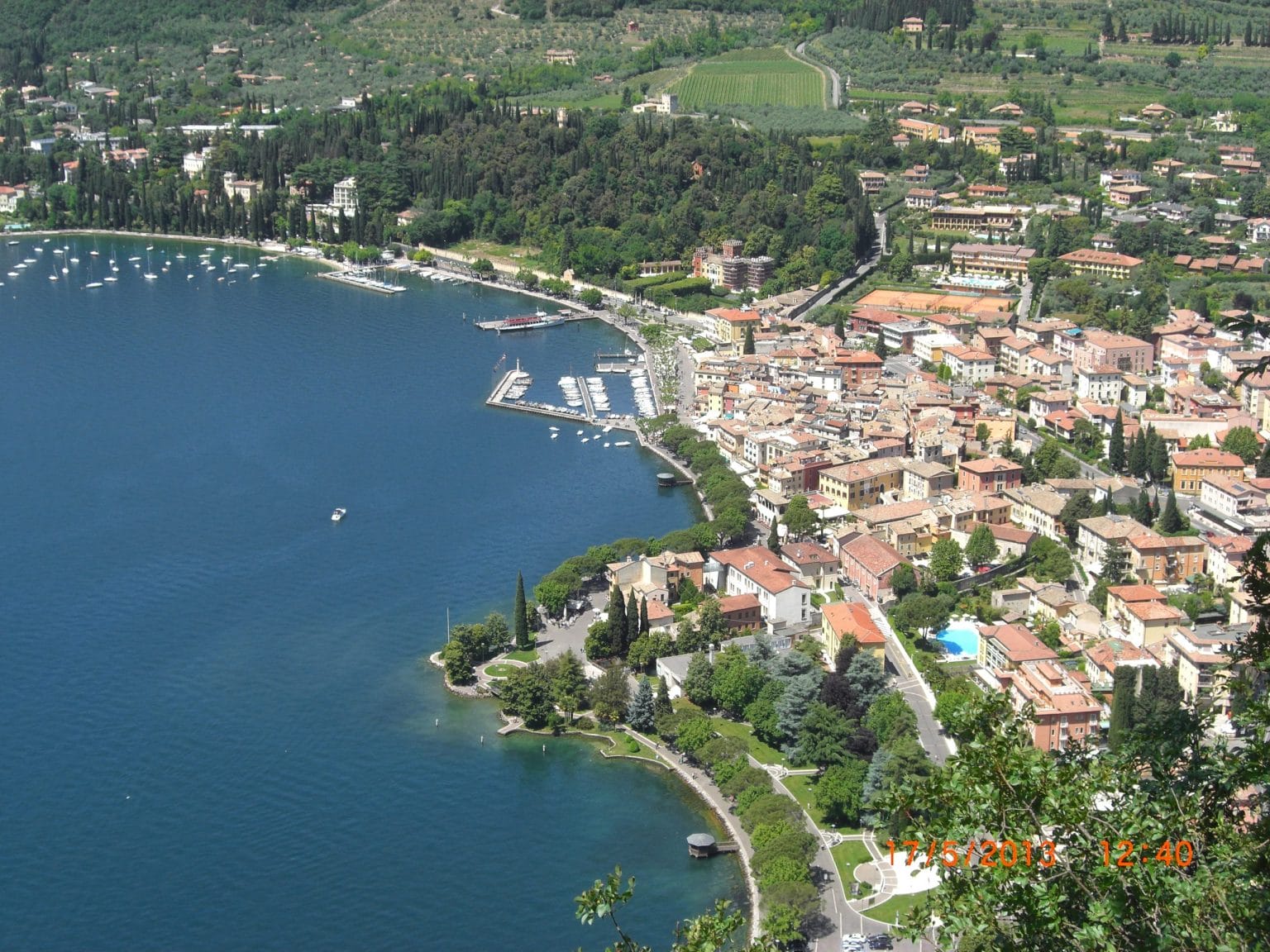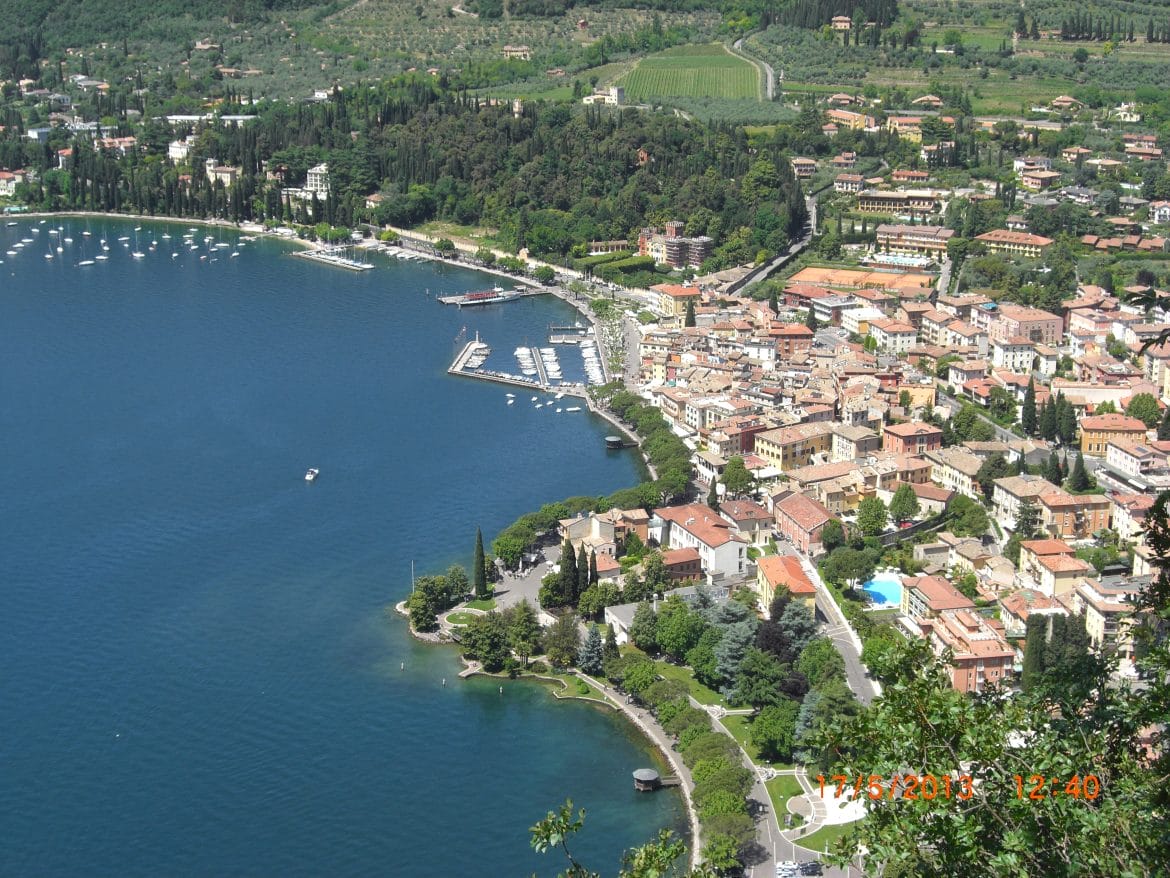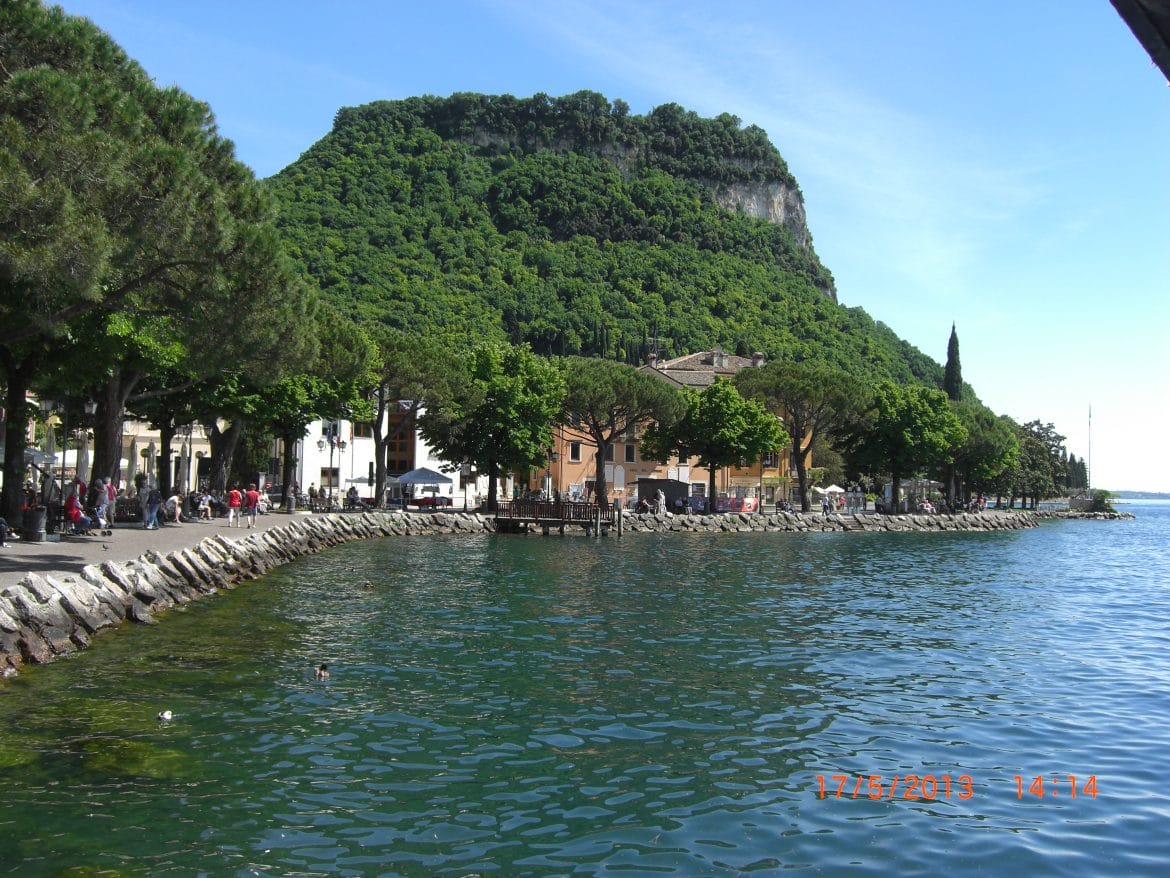Garda enjoys an idyllic setting in a picturesque bay on the Riviera degli Olivi. Surrounded by wooded hills, it is watched over by La Rocca (the Old Rock) its ancient guardian.
Getting there
Garda is accessible by public transport; either by ferry or by the bus service which runs between Riva del Garda and Verona (stopping points include Torbole, Malcesine, Torri del Benaco, Bardolino, Lazise, Peschiera).
Tourist Information
The office is located outside the old town, 100m or so down the Via don Gnocchi, not too far from the bus station. It is housed in an orange coloured building, set back from the left hand side of the road.
The Old Town
The Old Town is small and intimate. Its narrow streets are interesting though inevitably reflect the fact that tourism is Garda’s main source of income. A tower, by the 15th century Carlotti Palace, is all that remains of the fortified walls. The Captain’s Palace (14th or 15th century) is thought to have been the residence of the Captain of the Lake during the period of Venetian rule, which ended in 1797. It overlooked a small harbour, now filled in and the site of Piazza Catullo.
At the edge of the Old Town, at the foot of La Rocca, is San Maria Assunta, the parish church of Garda (open 7.30am – 12.00am). Construction began in 1530, but shortage of money delayed its completion until 1762. Following restoration of its façade and bell tower in 1979 and again in 2013, the church presents itself with appealing brightness and freshness. The three sections of the façade are of different periods, with white Verona stone framing the doors and with statues of St. Paul and St. Peter (1886) flanking a rather wonderful contemporary stained glass window. Within there is much to enjoy and admire, all being described with clarity in a free leaflet.
Some important buildings are found in the direction of Punta S. Vigilio. Unfortunately these are not pin-pointed on the map provided by the tourist office. Set in parkland, just outside the old town, is the historical Villa Albertini. Although its 16th century façade remains, there was major reconstruction in the 19th century. Further on is the Villa Canossa, and sitting proudly on the headland is the Villa Guarienti.
The Promenade
Garda’s wide, superb, tree lined, colourful promenade is the perfect place to sit, relax, and perhaps take refreshment at one of the numerous restaurants and cafes.
If you head to the left you soon join a pleasant lakeside path leading to Bardolino (3.2km). This is a very popular walk, particularly on Sundays and public holidays. The path passes bathing areas, copious cafes, bars and restaurants, and there is no shortage of benches.
To the right lies the headland Punta S. Vigilio, behind which is the scenic beach Baia delle Sirene.
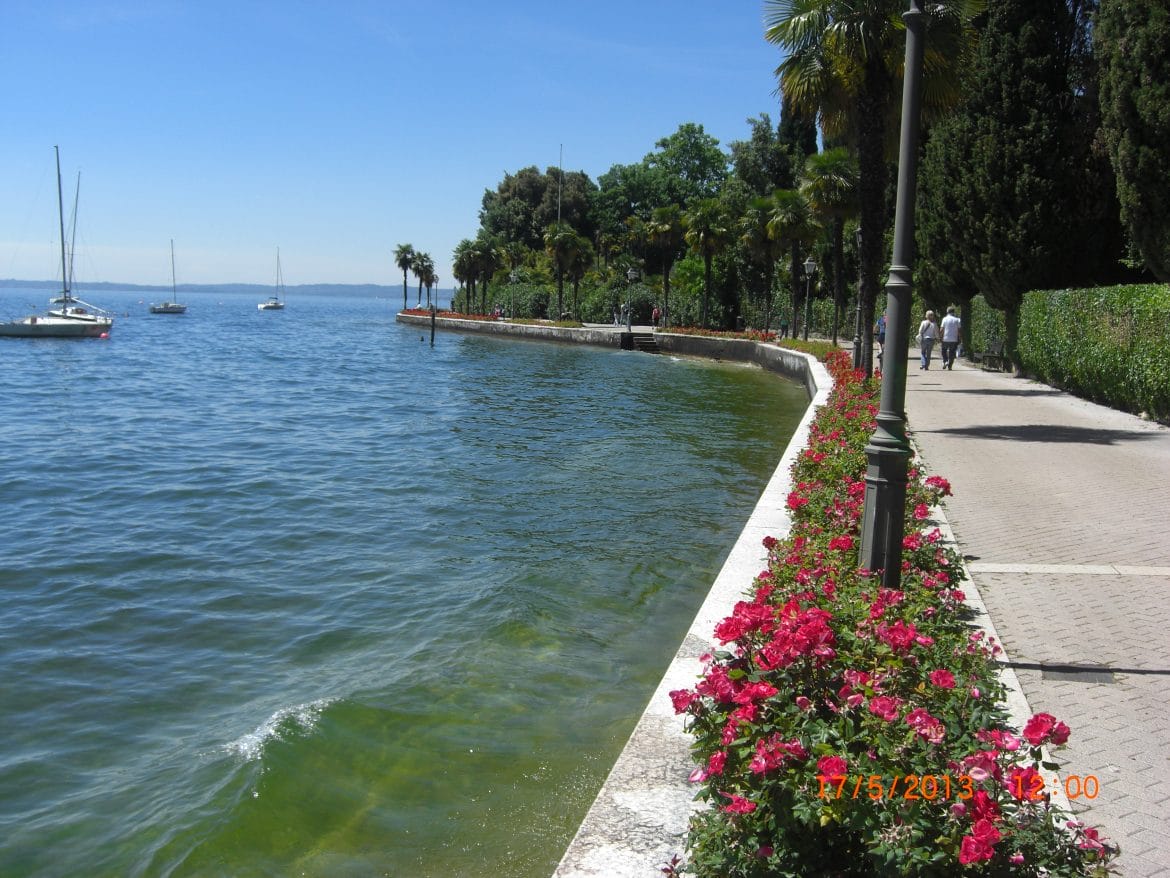 After passing through a star jasmine arch you encounter a very picturesque part of the promenade, with palm trees and roses whose red colour is intensified by the turquoise of the lake. When the promenade ends the path continues along a shingle beach, but soon narrows and would, I think, quickly become impassable when the wind whips up the lake surface.
After passing through a star jasmine arch you encounter a very picturesque part of the promenade, with palm trees and roses whose red colour is intensified by the turquoise of the lake. When the promenade ends the path continues along a shingle beach, but soon narrows and would, I think, quickly become impassable when the wind whips up the lake surface.
As you near the headland I would urge caution before attempting a detour to the right and following tired looking wooden signs pointing to ‘Graffiti’ , that is towards one of Garda’s treasures – the Prehistoric Rock Carvings. A group of disappointed walkers reported that they had abandoned their quest after encountering a path that was initially overgrown and later steepish and boulder strewn. A guided tour that one company describes as following cobbled pathways through vineyards and olive groves seems a more congenial option.
La Rocca
Over the centuries La Rocca has been Garda’s shield and defender. After the fall of the Roman Empire it played a key role in resisting the Barbarian hordes, and in 1162 it was besieged for a year.
Historical fact and legend sometimes curiously intertwine, as they do in the famous story of Queen Adelaide. In 950AD Adelaide, Queen of Italy, was held prisoner, in a fortress on La Rocca by Berengar, who had murdered her husband. He intended to strengthen his claim to the crown by marrying Adelaide to his son. His plan was foiled by her mysterious escape, reputedly with Divine help. She fled to Canossa, subsequently becoming Empress of Germany, upon her marriage to Otto. She was eventually made a saint.
At a height of 300m, the top of La Rocca offers the tantalising prospect of panoramic views of Garda and the lake. If you are physically fit and have the inclination, then make for via per La Rocca, behind Garda’s parish church. Here you can choose the stepped path that heads steeply through dense woodland or you can follow the road to Eremo dei Camaldolesi, a 15th century Carmelite monastery, and join the woodland path at this point. Soon you reach open grassland at the top, where you will be richly rewarded by the stunning views – it really is worth the effort.

